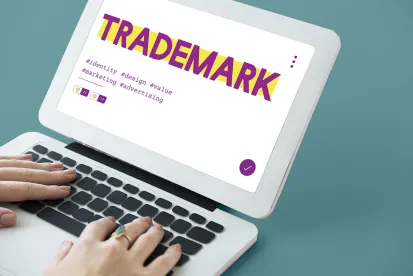The Trademark Modernization Act of 2020 (“TMA”) became law on December 27, 2020 and took effect beginning on December 18, 2021. The TMA amends the Lanham Act in several ways, but this article focuses on (1) the new tools to remove stale trademark registrations and (2) the restoration of the presumption of irreparable harm in trademark cases upon a finding of a likelihood of success on the merits.
Restoring the Presumption of Irreparable Harm
The most powerful tool to prevent infringement in a trademark owner’s toolbox is the ability to get injunctive relief very early in a case, that is, a court order preventing sales of the infringing product or service. Before 2006, trademark owners seeking injunctive relief were afforded a presumption of irreparable harm upon a showing of likelihood of confusion, which made obtaining early injunctive relief much more likely.
In 2006, the Supreme Court held that a plaintiff must prove irreparable harm to get injunctive relief. While that case, eBay, Inc. v. MercExchange, was a patent infringement case, its holding spread to trademark cases in some federal courts, but not all. As a result, plaintiffs carefully considered whether they could bring suit in a forum that applied the presumption, as it substantially increased the likelihood of early injunctive relief.
The TMA has resolved this split among the courts. The TMA amends the Trademark Act to clarify that a rebuttable presumption of irreparable harm applies upon a finding of infringement in the permanent injunction context, or upon a finding of likelihood of success on the merits in the context of preliminary injunctive relief. The amended provision applies to injunctive relief with respect to related claims under the Trademark Act, namely, unfair competition, false advertising, dilution, or cyberpiracy claims.
While the TMA has resolved the split, it is important to note that the TMA merely reinstates a presumption of irreparable harm. As with any presumption, if the presumption is rebutted by the defendant, the plaintiff will need to come forward with evidence of irreparable injury. Because of the fast-paced nature of motions for preliminary relief, Plaintiffs seeking injunctive relief should carefully consider the merits of establishing irreparable harm even in view of the restoration of the presumption.
Key Takeaway:
By reinstating the rebuttable presumption of irreparable harm in trademark cases, the TMA may make it easier for trademark owners to establish entitlement to injunctive relief.
Clearing the Dead Wood out of the Trademark Register
Nearly every trademark owner has experienced the disappointment of identifying the perfect mark, only to find out that it was taken. To add insult to injury, in some cases, it appears that the existing registered mark was never used or is no longer in use, but the registration remains on the trademark register until it expires.
Prior to the TMA, the options for getting rid of that conflicting mark were limited to (1) waiting to see if the registration expired or (2) petitioning the Trademark Trial and Appeal Board to cancel the registration for the blocking mark. Neither were fast, and the latter option could add significant expense.
The TMA provides two new tools to address this situation, Ex Parte Expungement and Ex Parte Reexamination. Anyone can petition the USPTO to expunge a registration, either in whole or in part, where there are specific goods or services listed in the registration for which the trademark has never been used in U.S. commerce. Expungement challenges can be filed between the third and tenth anniversaries of the registration. Likewise, anyone can petition to reexamine a registration that is less than five years old where the registered mark has not been used in U.S. commerce for some or all of the goods or services listed in the registration as of the relevant date in the application process.
In both cases, the burden to prove non-use is very high – it is always difficult to prove a negative. Therefore, a petition must include the elements of a reasonable investigation as to use and facts and evidence must be cited in support of the petition. Once the USPTO has determined the petition provides a prima facie case of non-use, it becomes the registrant’s burden to rebut the case.
Key Takeaways:
-
The TMA should provide a more robust way to cancel trademark registrations for nonuse.
-
Trademark owners should carefully review their portfolios to make certain that each registered mark they own is in use with all of the goods and services listed in the registration.
-
Prevailing in a trademark expungement or reexamination proceeding based on non-use requires substantial pre-filing investigation.




 />i
/>i

